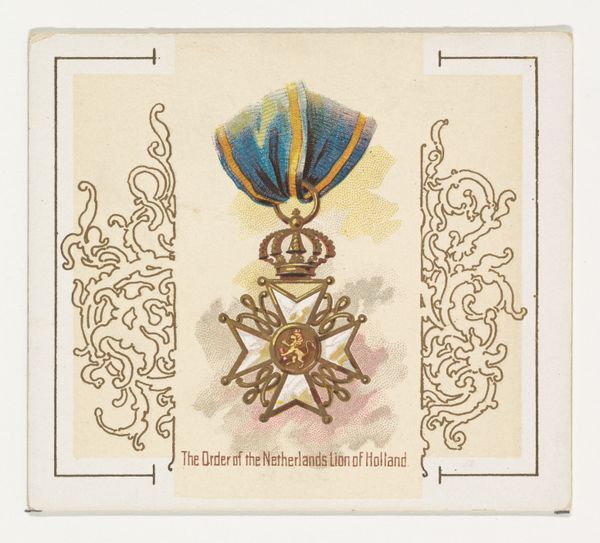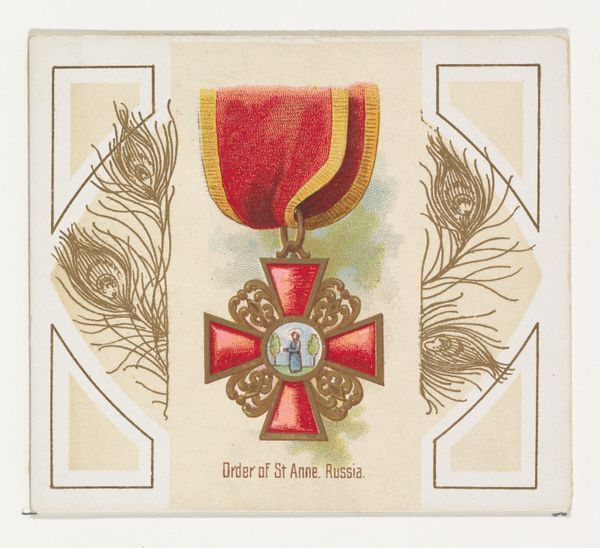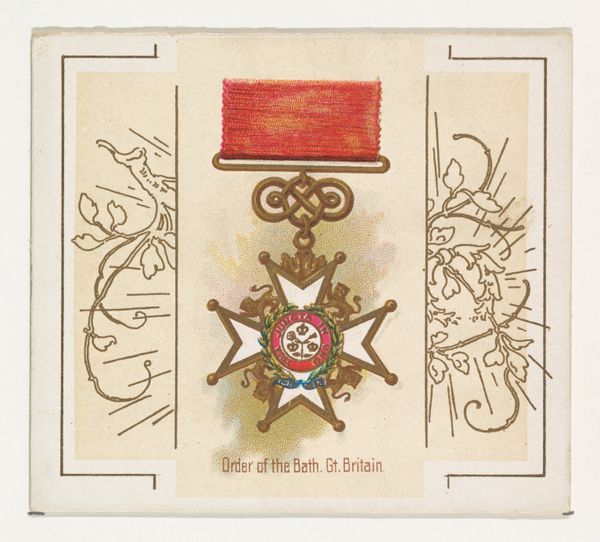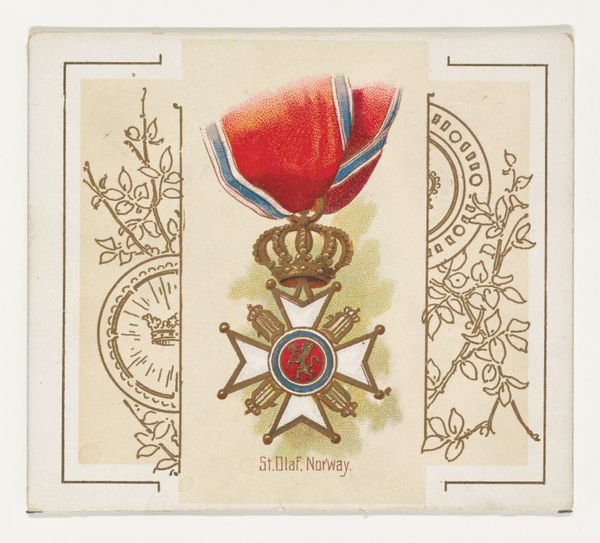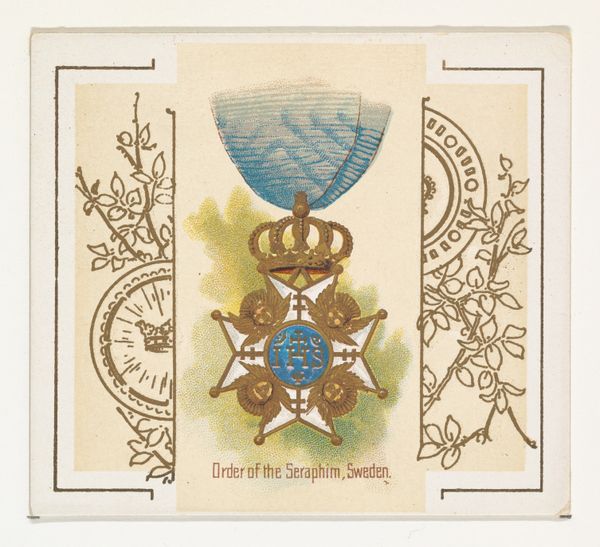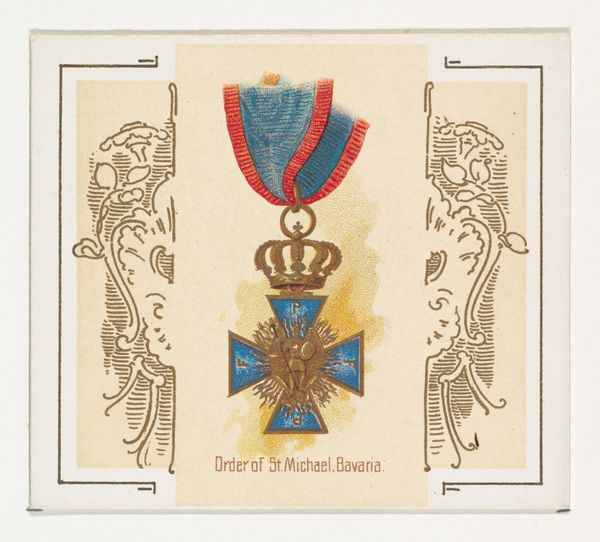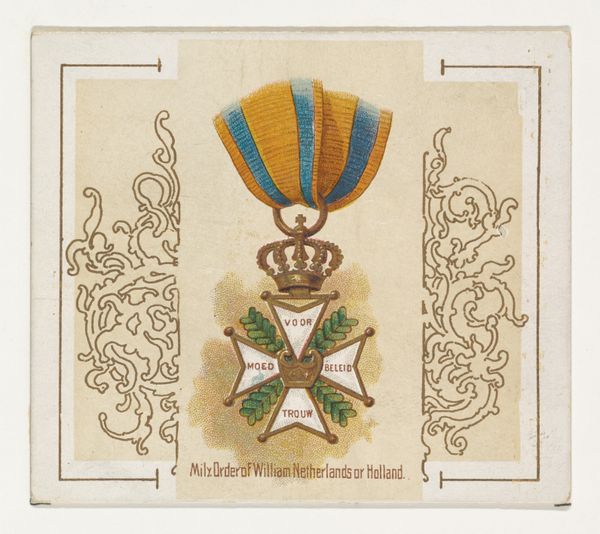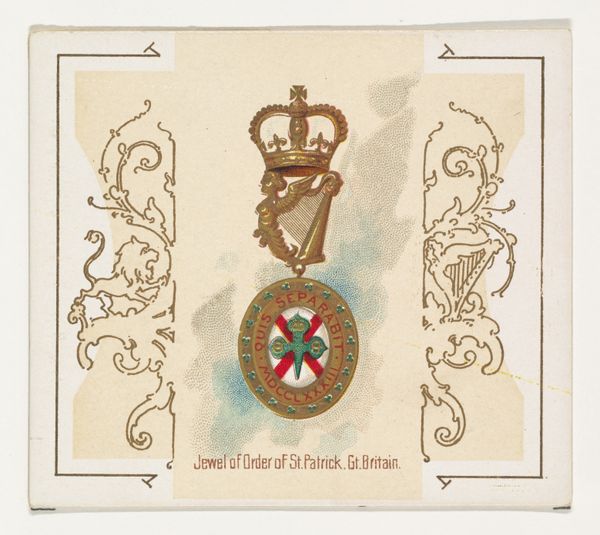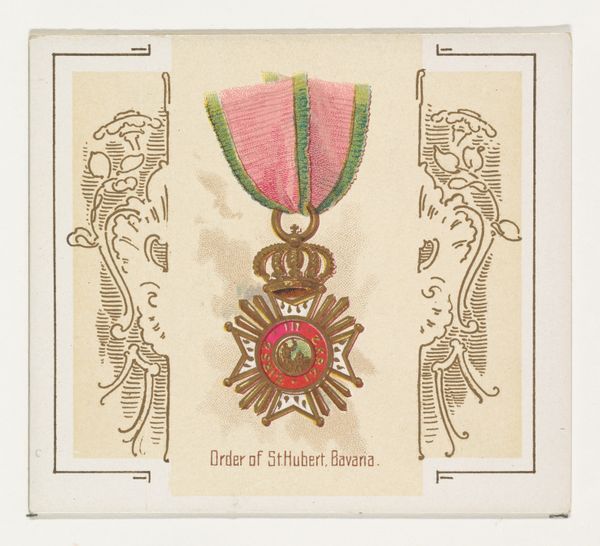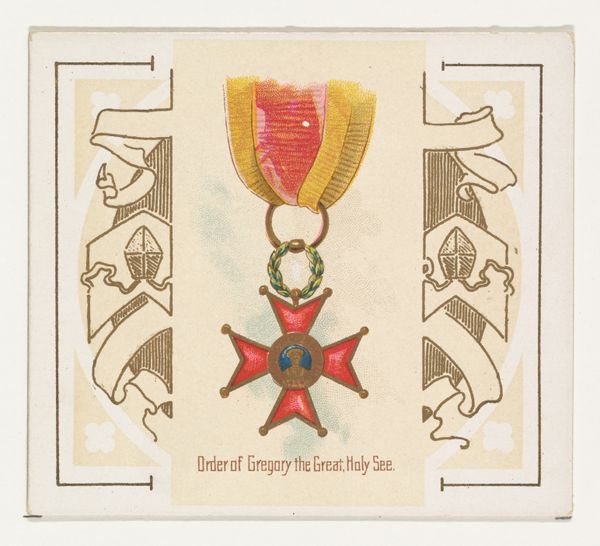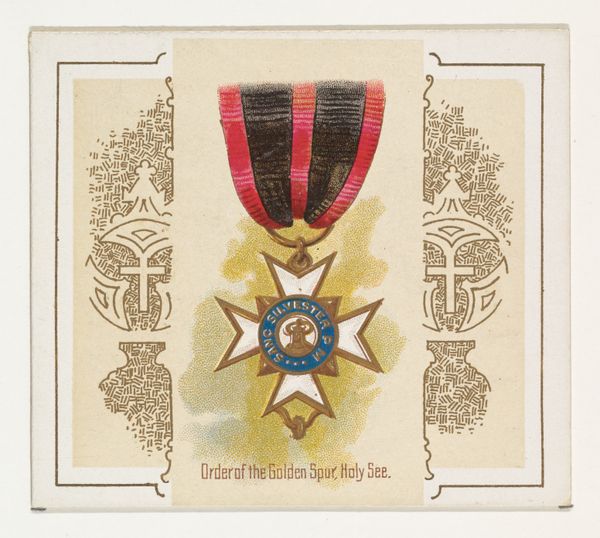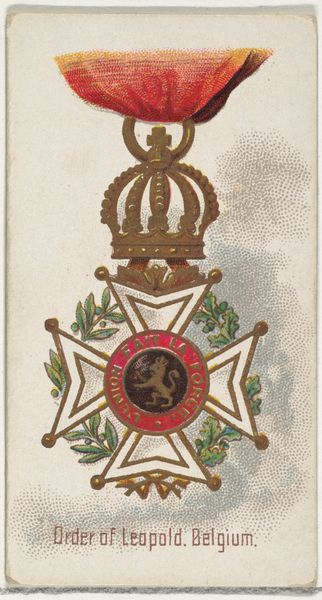
Order of Leopold, Belgium, from the World's Decorations series (N44) for Allen & Ginter Cigarettes 1890
0:00
0:00
drawing, graphic-art, ornament, print
#
drawing
#
graphic-art
#
ornament
# print
Dimensions: Sheet: 2 7/8 x 3 1/4 in. (7.3 x 8.3 cm)
Copyright: Public Domain
Editor: This is "Order of Leopold, Belgium," a print from 1890 by Allen & Ginter, part of the World's Decorations series. It's so ornate and detailed, but something about it feels… almost like propaganda? How do you interpret this work? Curator: Your reading resonates strongly. We need to examine this image beyond its face value as mere "ornament." Medals, like the Order of Leopold depicted, aren’t neutral objects; they are deeply enmeshed within power structures and historical narratives. Consider the context of 1890. Belgium, under Leopold II, was actively engaged in the brutal colonization of the Congo. Editor: So, you’re saying that even an image of a medal can reflect this colonial exploitation? Curator: Absolutely. The medal itself symbolizes authority, honor, and a certain constructed notion of civilization. By circulating images like these within series of collectible cigarette cards, Allen & Ginter participated in the widespread popularization of colonial ideology. Editor: That’s unsettling. I hadn't considered the way it normalizes that authority. Were people even aware of the atrocities happening in the Congo? Curator: Awareness varied. But this is precisely where the image operates insidiously, fostering an environment of imperial pride that overshadows, and even excuses, colonial violence. Editor: I guess I just saw a pretty design, but now I realize there's so much more beneath the surface. I’ll never look at these ornamental prints the same way again! Curator: Precisely! Understanding art requires us to delve into the social, political, and historical currents that shaped its creation and reception.
Comments
No comments
Be the first to comment and join the conversation on the ultimate creative platform.
